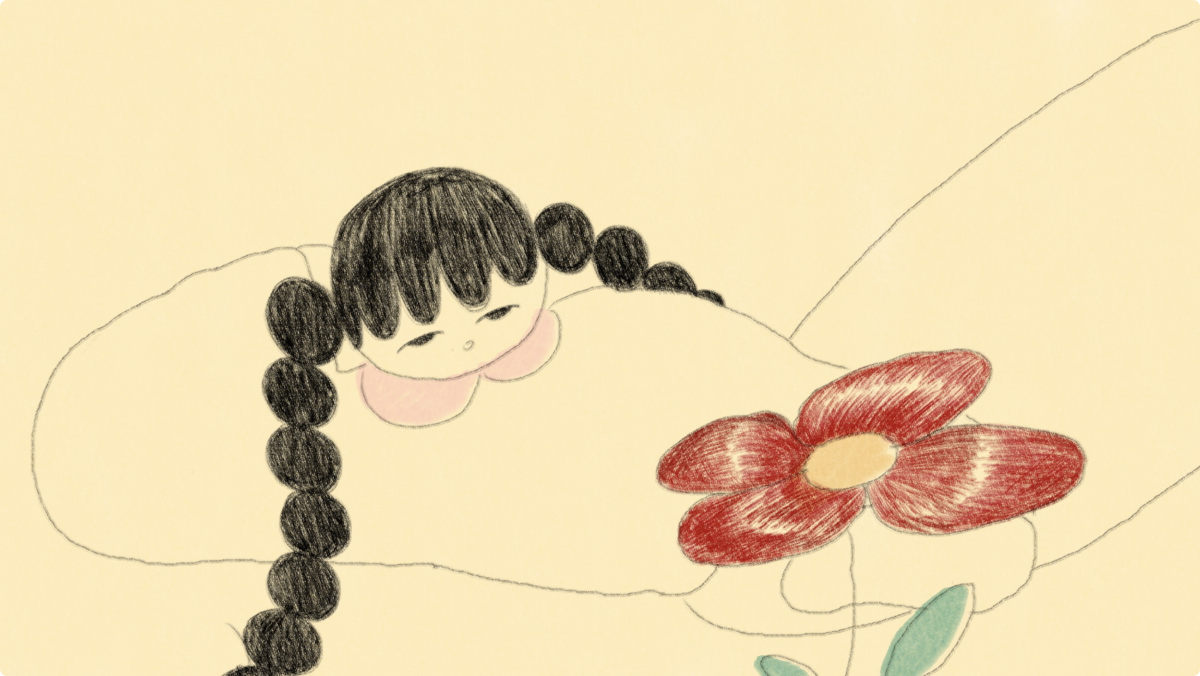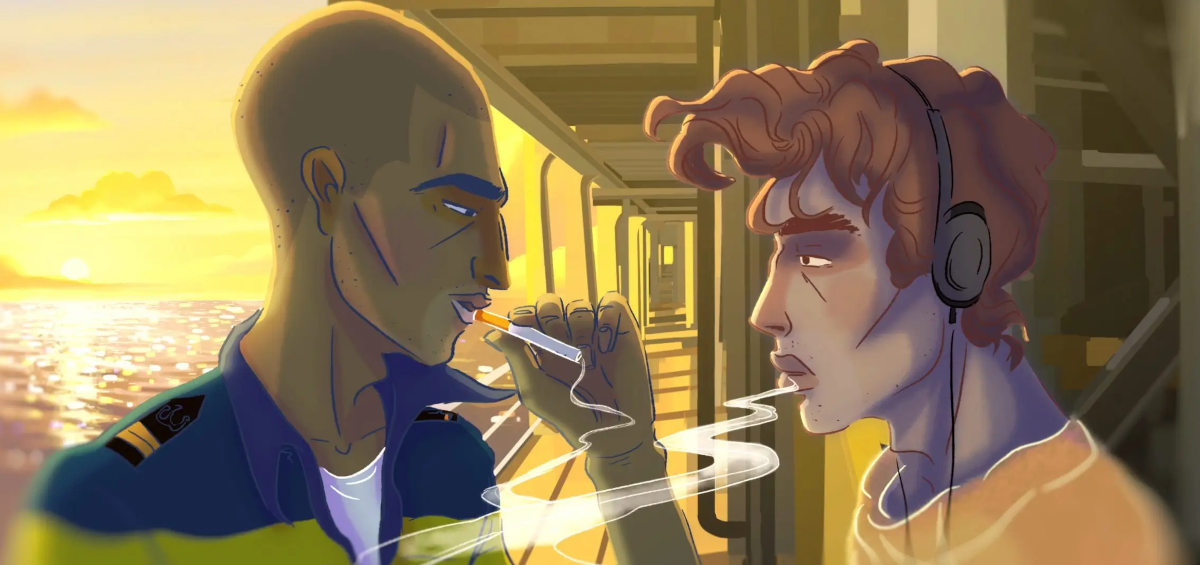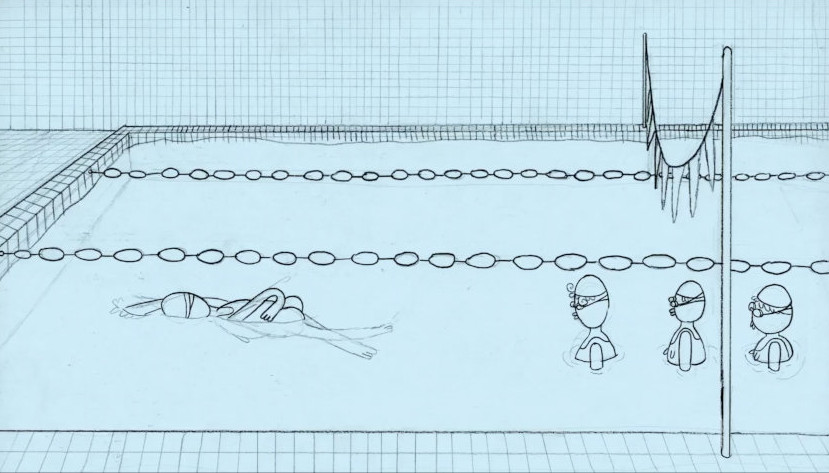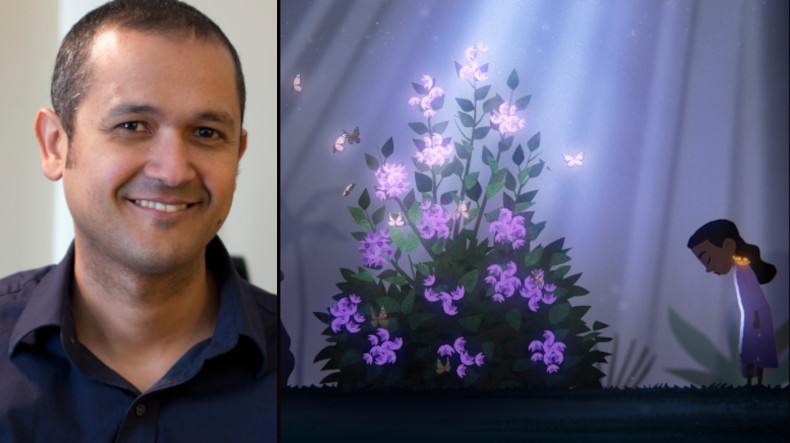Interview with Eric Leiser: The Art World Needs to Reach Out to More People
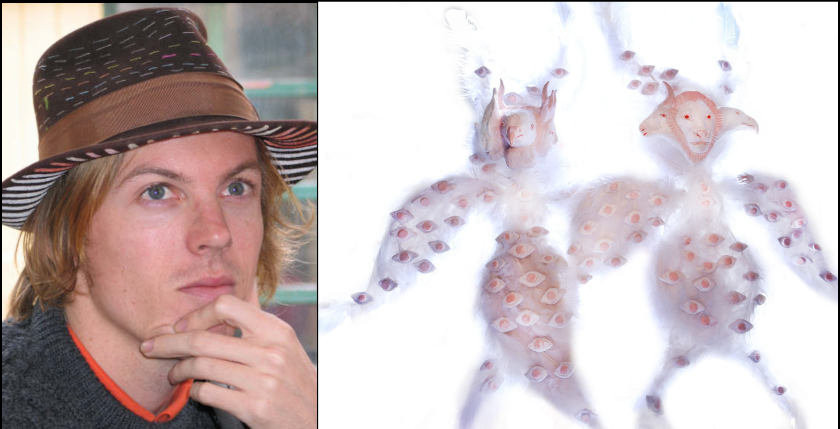
New York based filmmaker and artist Eric Leiser is not an unknown name to Zippy Frames (check our coverage), and a very prolific filmmaker, having now directed 4 animation features (Faustbook, Imagination, Glitch In the Grid, Apocalypsis) and a number of animation shorts. His shorts have been published on a dvd collection and his work, from 2001 to 2008, his recent short films are available to stream at Kinoscope and is now part of the T-Short retrospective.
We caught up with Eric Leiser (via Zoom) regarding the latter. "For some reason, my animated films work better as a whole, individually and holistically", Leiser tells Zippy Frames. "They work like a sentence describing a longer paragraph." The dialogue between the short films in a retrospective fascinates him (also the differentiated audience response), even if he still likes to work in the long format.
Having been educated at CalArts experimental animation programme (under Jules Engels and Suzan Pitt), Eric Leiser already learned from the start that independent animation filmmaking can be hard to sustain yourself financially. He quickly devoted his time also to commissioned film videos (like Little Band of Sailors or Dwell with Me).
"Animation is so time-consuming and labor-intensive" he rightfully states. There was the issue of how I could work consistently and at the same time focus on my own projects". Early work on doing animated scenes for features conflicted with other people's ideas. So creative control over his commissioned projects is what he asked. " Let me as an artist interpret this work upon hiring me" Leiser explains his policy. "That allowed me to have a more artistic approach to the work; also to keep growing within animation, and applying what I learn by animating consistently to my personal work without too much corruption. This has facilitated me staying constantly in practice, always learning, immersed in animating".
His latest animation feature, Apocalypsis, a mixture of present-day oppression and apocalyptic revelations, has two New York misfits Emily Rose and hacktivist and underground NY radio host Michael Banderwack; they both need to end, fight or flee cybernetic state oppression.
"Dealing with alienation in the contemporary life where spirituality is not prized and valued is the core of Apocalypsis" Leiser tells Zippy Frames. "We live in a materialistic world. The main character was more engaged in the life after, but then she realized that this was more of a cop out; they had accepted their own life as it was, and they were yearning for the life after, but they had to find out that the life after is here in this earth". Both Apocalypsis and Leiser's previous films had a long gestation period, which is not uncommon to the world of independent animation; pre-planning goes hand in hand with creating, and most creative ideas fight with each for attention. As its director says, "the idea itself has to be very strong, and almost have a life of its own -as if it wants to get made.
In terms of technique, the tension between live-action and stop-motion animation is palpable in the film, and there's always an interplay between carefully lit live-action sequences and animation. "Live-action draws more attention and even frames the animation; it makes it even more distinctive, when you see it next to live-action; it then amplifies the uncanny nature of it" Leiser will state. Sometimes (like Glitch in the Grid) both animation and live-action need to contrat and communicate with each other. Yet at other times (like Apocalypsis) heavy attention to detail and symbolism via animation was required.
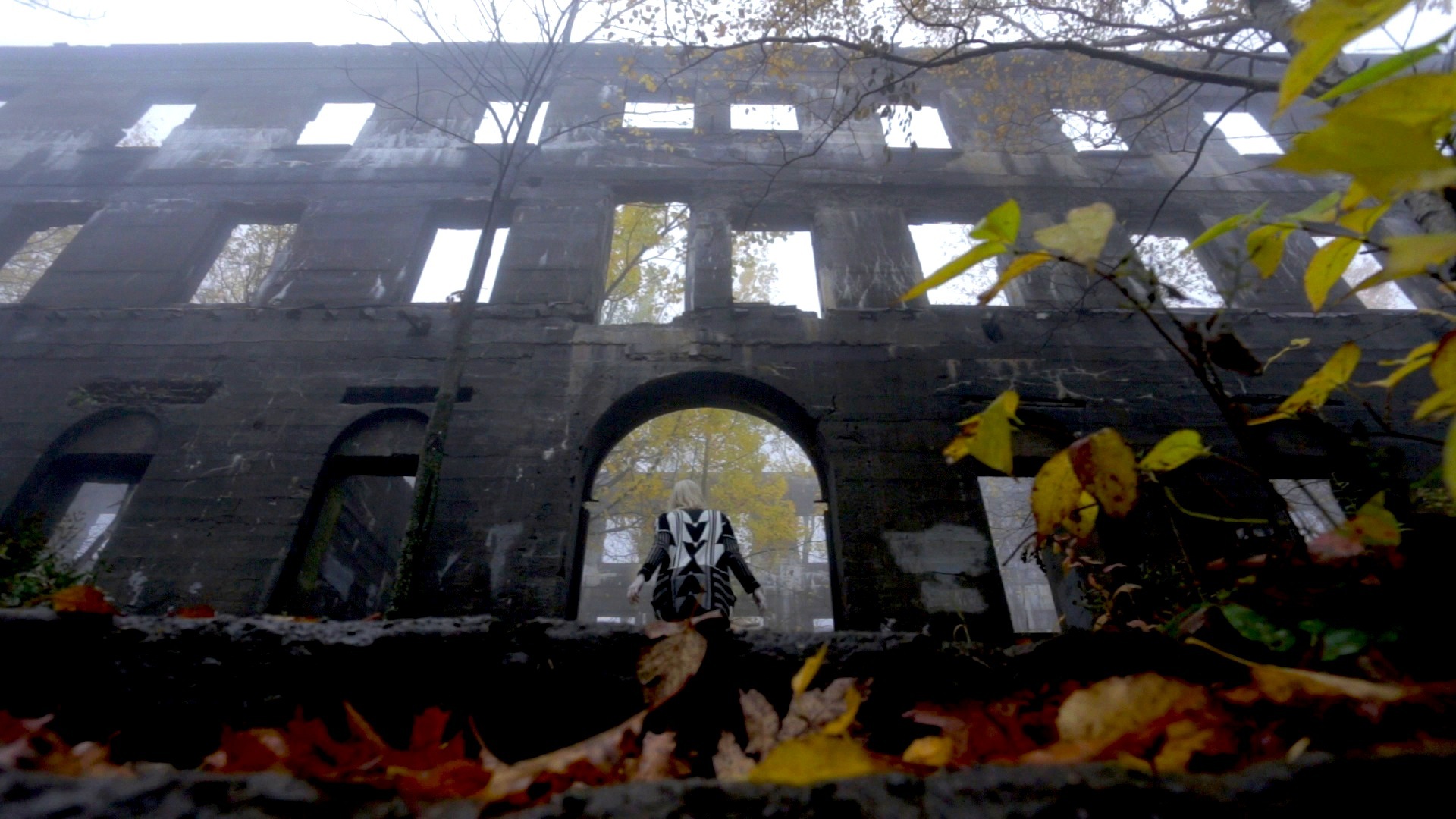
Eric Leiser's involvement with the European and independent animation world is a long one, and its origin are to be found in his pre- CalArts years; both observation of natural movements and lighting in nature (Leiser grew up in Northern California), but also his cultured upbringing (watching works by Ladislas Starevich, Bill Vinton Studios, the Hubleys, Masters of Russian animation series, in particular Nina Shorina, Yuri Norstein's work on his local TV channel) was a big source of inspiration. It helped that his immediate environment was supportive: his father worked for George Lucas during Star Wars Return of the Jedi (1983) and other films. Leiser was also able to watch the European puppet masters (Jiří Trnka, Jirí Barta, The Quay Brothers, films by Alexander Shirayev).
The Jan Svankmajer experience came after repeated visits to the local arthouse video store ("they had a pretty solid international animation section behind the world cinema section"). Leiser was blown by the Czech master's work; this was the starting point for both watching more obscure European animation shorts and (after some years) he also shared a dinners with Jan Svankmajer and his wife Eva and the Czech Surrealist Group in Prague - after the mediation of William Moritz, also his CalArts teacher. Suzan Pitt became Leiser's mentor after Engels passed away; married experimental filmmakers Janie Geiser and Lewis Klahr are also listed among Leiser's influences ("they took me under their wings").
Watch an excerpt from Eric Leiser's interview at Zippy Frames:
Leiser also visited the UK stop-motion scene ("more conventional than the stuff in Prague, but still a lot of craftsmanship put into stop-motion that was really impressive to me"). He visited 3 Mills Studios (the shooting place for Wes Anderson's Fantastic Mr. Fox, and Tim Burton's Frankenweenie), and had his DVDs for sale at the BFI Store, often watching films at the (BFI) British Film Institute.
Back to New York and to the present time, Leiser benefited from a theatrical release of his Apocalypsis feature, both nationally and internationally. "I loved the experience and I miss it" is his own reaction. "It was fantastic to get perspective from people. You take it to your future work. With the online version, everyone loses on the collective wisdom that goes on with an audience in a theater. That said, I'm glad that people can still watch the work online and that cinema is reaching new places and audiences through the Internet. But For me, it's a bit of a simulacra, lacking the rich experience of cinema going, and why we make films -it's a communication vessel".
But what would be the audiences' particular reaction towards his films? "Usually, there's an emotional core that people connect to" Leiser observes. "Sometimes, it's the spiritual content that touches them. You also hear some great stories and feedback that's very personal". Even though Leiser himself is in contact with the New York artworld (the Anthology Film Archives remains his favorite spot for experimental filmmaking screenings and events), he wouldn't want to pigeonhole himself as an arthouse animation director.
In the art world Animation is usually put into a certain corner (art installation, video art, experimental, as part of a certain artist's body of work) I do not see it given the reverence of painting or sculpture in academia, museums and galleries. It's often the main exhibition with animated films being a supplement. It's still an underappreciated artform, there seems to be a communication gap between the independent animation world and the art world, perhaps it's wishful thinking but I think that will change over time. The pandemic kind of shook things up in terms of how we view the value of the movie image as a vital Art.
Yes, my animation is made in a certain way, and it comes from the history of experimental filmmaking, but my film work is also influenced from the history of world cinema and Art History in general. Even though my world is experimental, I get a lot of responses all over the planet from people who write to me, and say they were really touched by it. I don't feel I'm making films for a small little group; I feel the art world needs to reach out to more people, and be more inclusive in all ways. Many people would like love participating in the artworld, if they just didn't feel there was a wall there preventing inclusion - Eric Leiser
He's now preparing his next feature, Twilight Park, an 85-minute stop-motion/hand-drawn animation project that has been in steady production for about 18 months now. Leiser describes Twilight Park as his own "love letter to animation", deploying different styles and creating his own unique melting pot. "It's the most difficult project I've ever done, and it takes a lot of logistics and planning- while keeping it open for improvisation and warm enough for new ideas to percolate" Leiser admits. " I'm used to the more intuitive type of work, an animated feature intimidated and daunted me for so long, preventing me from even starting but the pandemic spurred me on to take that big leap of faith and go for it because it's my passion project."
The subject of the film is about a grandpa and his grandson and their intergenerational relationship; the grandson is sucked into the grandparent's mind, who has Alzheimer's. While the grandpa's mind is deteriorating, the grandson goes inside trying to save his grandfather's memories. Issues of time here loom large, and also the question of memory: is it a personal one or a community, commodity to be transferred? Or even a collective memory? Leiser himself will animate big chunks of the film, and different animators will do the rest. Composer Jeffrey Leiser, a constant presence in Eric Leiser's work, will score this film as well "My brother' s music got me into animation as well; it can be very inspiring, it helps me make the work and to endure. There is a bigger dream revealing itself when we work together since we share a spiritual and artistic bond. He can understand things I cannot verbally articulate. There's something much deeper that cannot be felt in words, and I feel that Jeffrey's music helps bring that out in the films".
Unlike Apocalypsis, Twilight Park (to be shot in 35mm) will not be overtly spiritual per se. "This one is coming from imagination and it heads more towards the abstract than the representational; concepts of love and sacrifice".
Based in New York, Leiser describes it as "a good place to exhibit work, but pretty rough at times to live". Still he admits he's gotten used to it ("got a little tougher myself "). In all cases, the sheer amount of output he has accomplished is impressive, and Leiser's voice in independent animation in handling all these distinct influences to a different, contemplative vision is one that needs to be heard.




